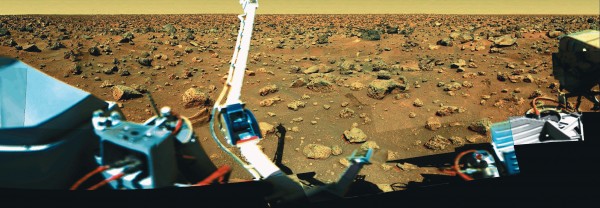Beyond the fringe
During late spring and early summer the night sky appears to be rather featureless. In the west the brilliant riches of Scorpius and Sagittarius have disappeared, while in the east Orion, lord of the summer sky, is just rising, and the inverted Southern Cross is scraping the southern horizon. The pattern of stars forming most of the constellations in view has but the vaguest, if any, connection with the objects after which they were named; nevertheless they contain a number of remarkable objects.
Above the northern horizon the Great Square of Pegasus guides one to the brightest and best known of the spiral galaxies, M31, the Great Andromeda Nebula. About twice the size of our galaxy, it is the nearest and biggest spiral galaxy to us. Containing about 300 billion stars, this gigantic system can be seen with the naked eye on a clear, dark night as a luminous patch low on the horizon. Binoculars or a small telescope show it as a distinct elliptical cloud, but it needs a long exposure photograph to reveal its full magnificence.
Looking south there are two prominent galaxies, the Large and the Small Megellanic Clouds (LMC & SMC), both about 200,000 light years away.
LMC is not easy for city dwellers to see, but it contains the vast Tarantula Nebula, and the brightest star known, S Doradus. Dimmed by distance, this star of variable brightness is too faint to be seen without binoculars or a telescope, but has been known to shine with the brilliance of 1,000,000 suns.
At 100 light years across, the Tarantula Nebula is the largest of the bright nebulae. It is being heated by a cluster of 100 young super-giant stars which are being forced by their size to fuse hydrogen at a prodigal rate. The high intensity ultraviolet radiation which the emit causes the surrounding hydrogen cloud in which they were formed to fluoresce.
Such stars have but a short life (as little as 10 million years, compared with, say, our own Sun’s expected life of 10 billion years) and they are fated to become supernova, as did their near neighbour Sandulek. This event was observed on 23 February, 1987, when a ‘new’ star blazed forth beside the Tarantula.
To the west is SMC, and on its lower or western edge lies a hazy spot known as 47 Tucani. Binoculars show it as a glowing globe with a bright centre, and small telescopes resolve the haze into a swarm of stars. This is the second most brilliant globular cluster seen from earth. About 210 light years away, it is composed of a million stars and is one of the jewels of the southern sky.
Between and north of the Megellanic Clouds is the brilliant, bluish Achernar, alpha Eridani, marking the mouth of the river Eridanus which winds across the sky from the feet of Orion.
North of the zenith swims Cetus, the whale or sea monster, sent to devour Andromeda. To the west is the only other bright star high in the sky: Fomalhaut, alpha Pisces Austrinis, the southern fish, which wisely swims behind the whale.
Halfway along Cetus is one of the most famous ‘type stars’, Mira, the Wonderful, omega Ceti. First recorded by Fabricius in 1596, its variable brightness was confirmed and records of its fluctuating light output are the longest of any variable star.
Mira gives its name to the class of long period red giants, stars akin to the Sun but which have exhausted the hydrogen in their cores and are now fusing helium to form carbon. This process greatly increases the core temperature and the outer layers of the star expand until they are 100 times the size of the Sun.
In the case of Mira the surface temperature fluctuates between 2640°K and 1920°K, so that the output of visible radiation varies by a factor of 1700x approximately every 330 days.
One of the tasks of Hipparcos, the satellite launched in August, was to study Mira-type variable stars. Amateur astronomers around the world were asked to make frequent estimates of the brightness of these stars so that the satellite controllers could direct Hipparcos to those stars brightening towards their maximum output of energy.
Sadly, although Hipparcos was successfully launched, its apogee motor failed to fire and the satellite was left in a low, short-life orbit.
Thus years of work by many people, including astronomers at Canterbury University, have been brought to nought. How much of the mission can be salvaged remains to be seen but it looks as if only an abbreviated part of the Mira programme can be carried out.















